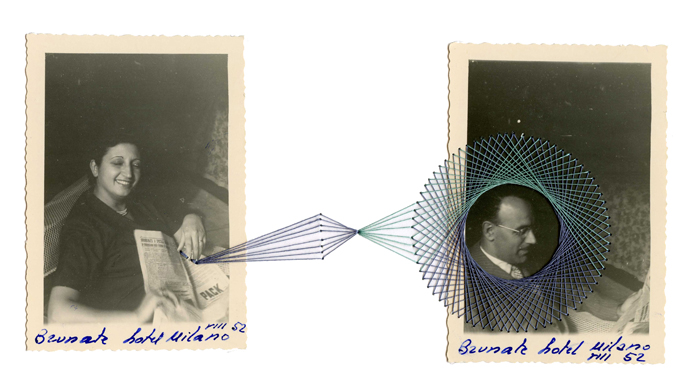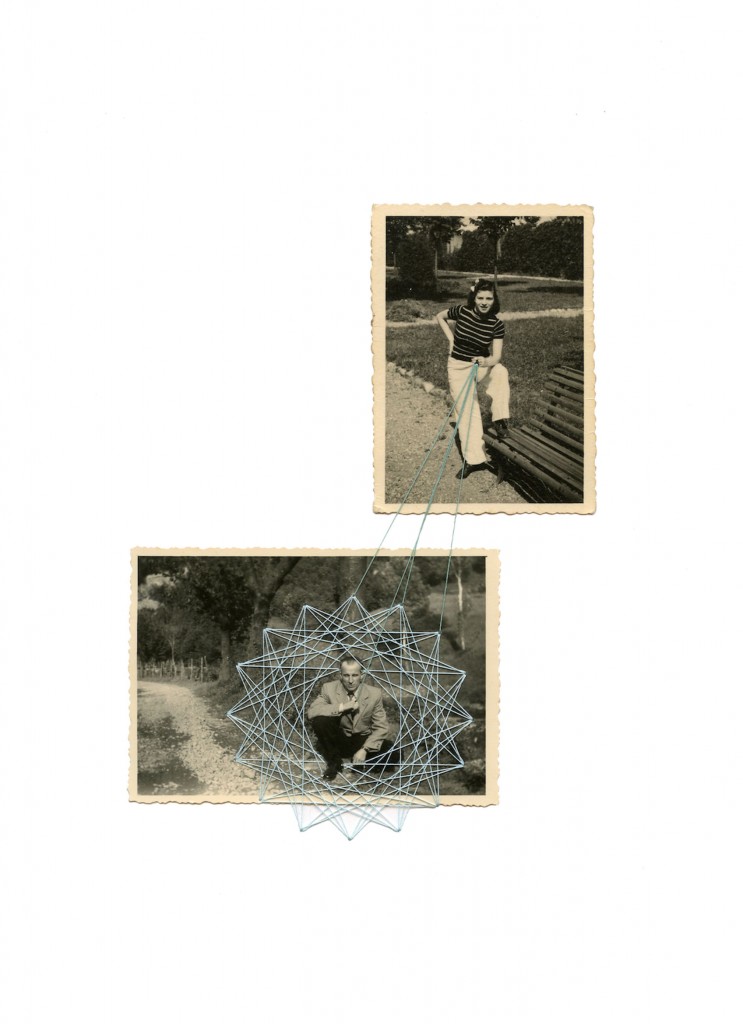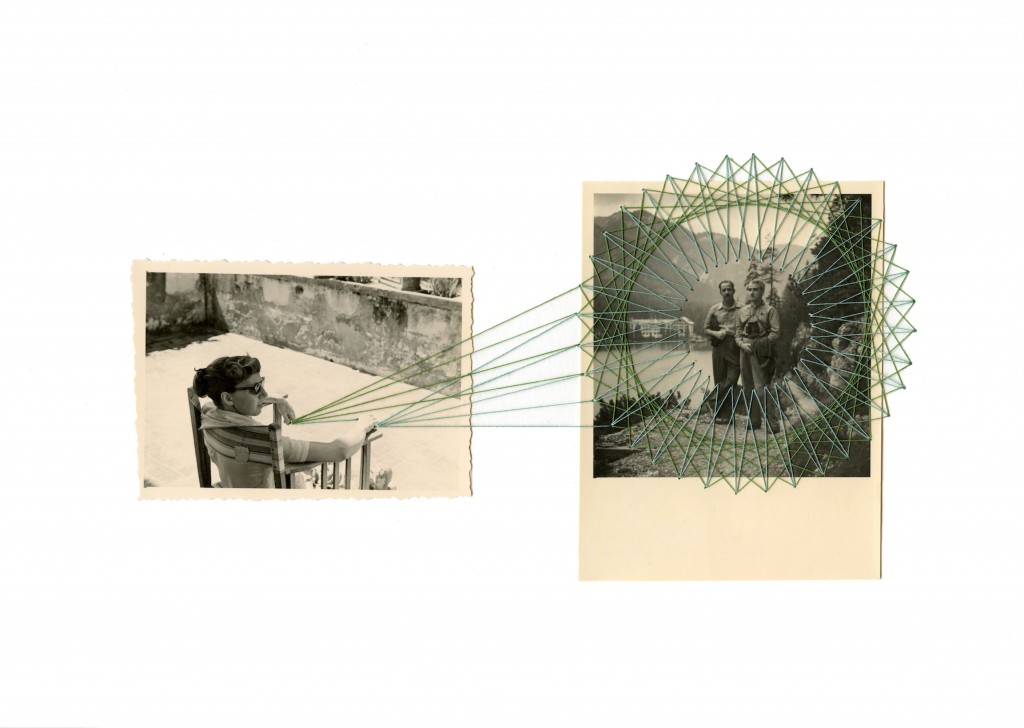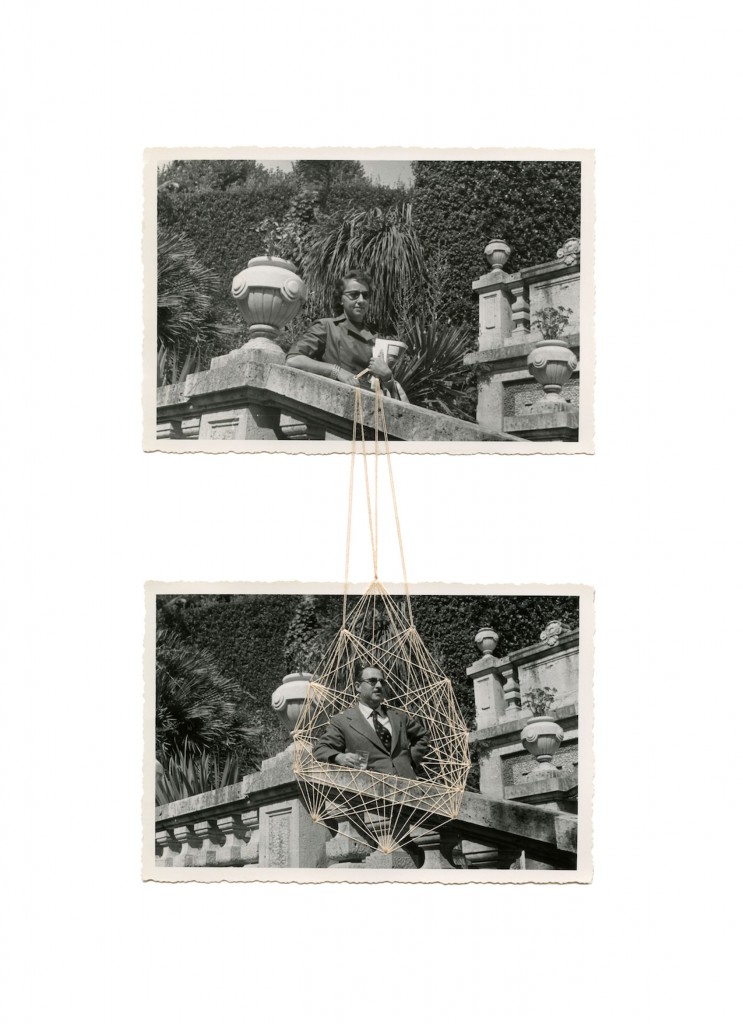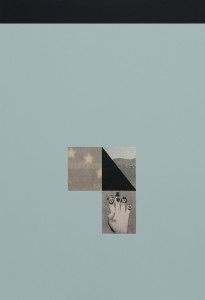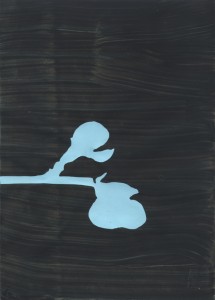Inaugurazione 30 maggio – ore 18,30
dal 30 maggio al 24 giugno 2016
A cura di Francesca Orsi
Non sono volti quelli che ricama Marika Saonari in “Reticoli”, né tanto meno parole. Ma come le parole il filo dell’artista punteggia una partitura immaginaria in cui vecchie tradizioni e contemporaneità possono fondersi per creare una sorta di leggero ed ironico spaesamento. Il suo fare artistico è teso ad attualizzare il ruolo della donna nella società odierna attraverso la manipolazione e la trasfigurazione di una sua rappresentazione pregressa, di un corpus fotografico che la ritrae, nei primi decenni del ’900, sottomessa ad una figura maschile che non lasciava spazio ad altro.
Marika conferisce al ricamo sembianze geometriche, studiate e rigorose, che si caricano di tutta la potenza di una porta temporale; un mezzo che serve all’artista per aggiungere al reale dell’immagine un simbolico che la porta nell’attualità.
Dalla chiusura domestica in cui era moglie/madre/padrona di casa la donna si trova ora ad essere lei stessa burattinaia, tessitrice di trame e di reti di potere. In un movimento dal dentro al fuori, anche tramite l’artistizzazione di un rito, il ricamo, prima solo passatempo privato Marika Saonari con “Reticoli”, in maniera ironica e con toni frizzanti, gioca secondo l’arte della decontestualizzazione dello stile trouvè. Vecchie foto trovate ai mercatini e una tecnica dai sapori antichi come il ricamo per dare voce all’attualità, al progressivo mutamento sociale della figura femminile che l’ha condotta, nel tempo, ad impugnare le redini gioco. “Reticoli” è un progetto dalle tinte emotive, intime, ironicamente intelligente, e dalle congiunzioni ramificate come quelle della tela di un ragno.
“What Marika Saonari embroiders in “Reticoli” are neither faces nor words, but, just as with words, the artist’s thread punctuates an imaginary score in which both old and contemporary traditions fuse together in order to create a light, ironic disorientation. Her artistic modus operandi is aimed at bringing up to date women’s position in today’s society by manipulating and transfiguring their previous representations in a photographic corpus in which early 20th century women are portrayed as submitted to male figures who did not allow any space for freedom.
Marika gives her embroidery a geometrical, studied, rigorous appearance, loading it with all the potency of a time portal. Means, for the artist, to add symbology to the image, bringing it up to date.
If she used to be wife/mother/housewife in the cage of domestic life, in Marika’s artworks women are now puppeteers and weavers of power networks. With a movement from the inside to the outside, Marika in “Reticoli” turns the rite of embroidery – which used to be just a private pastime – into Art by playing ironically and cheerfully along the lines of the decontextualizing art of the readymade style. She gives voice to modernity and to the progressive social mutation of the female figure, which has seen her slowly take the lead of the game, by assembling old pictures found at secondhand markets and an oldfashioned technique, such as embroidery. “Reticoli” is an emotional, intimate and ironically intelligent project, enveloped in the intricate networks of a cobweb.
